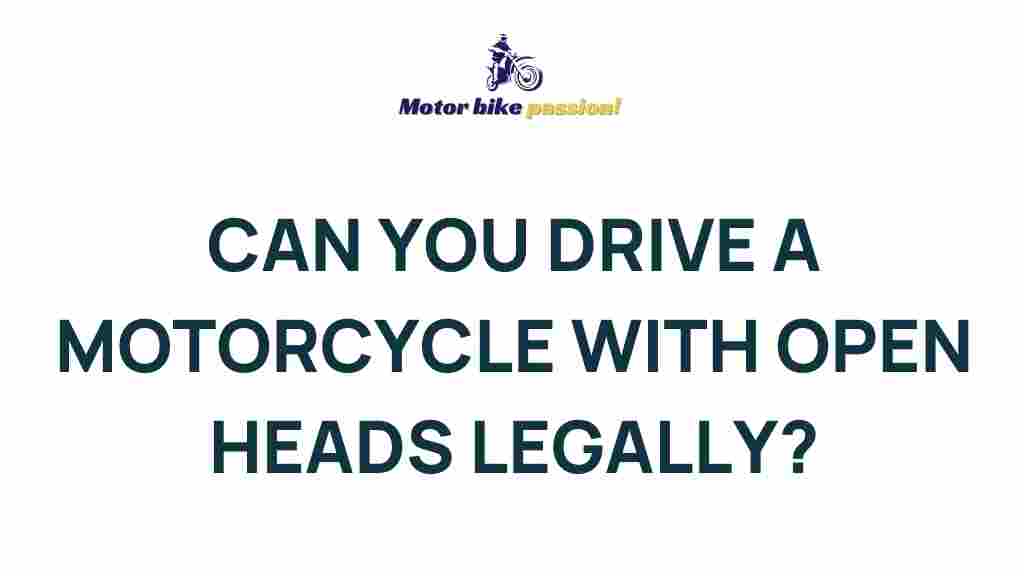Unveiling the Legalities of Riding a Motorcycle Without a Helmet
Riding a motorcycle is an exhilarating experience that offers a sense of freedom and adventure. However, it comes with its own set of responsibilities, particularly concerning safety regulations. One of the most debated topics in motorcycle riding is the legality of operating a motorcycle without a helmet. This article will delve into the legal aspects, safety implications, and the risks associated with riding without proper headgear.
The Importance of Helmet Safety
Wearing a helmet is not just a matter of personal choice; it significantly impacts your safety on the road. Helmets are designed to protect the head in the event of an accident, mitigating the risk of severe injuries or fatalities. According to statistics, helmet use can reduce the risk of head injury by up to 69% in the event of a crash, highlighting the critical role of headgear in motorcycle safety.
Legal Regulations Surrounding Motorcycle Helmet Use
The legality of riding a motorcycle without a helmet varies significantly from one jurisdiction to another. Here are some key points regarding helmet laws:
- Universal Helmet Laws: Some states enforce universal helmet laws, requiring all riders to wear helmets regardless of their age or riding experience.
- Partial Helmet Laws: Other states may have partial laws that only require certain age groups to wear helmets, such as riders under 21.
- No Helmet Laws: A few states do not mandate helmet use for any riders, allowing individuals to choose whether or not to wear a helmet.
It is crucial for motorcycle riders to familiarize themselves with the specific regulations in their state or country. Failing to adhere to these rules can result in fines, penalties, or even more severe legal consequences.
The Risks of Riding Without a Helmet
Choosing to ride without a helmet significantly increases the risk of injury. Here are some potential risks associated with riding without proper head protection:
- Severe Head Injuries: In the event of an accident, the head is often the most vulnerable part of the body. Without a helmet, riders are at a higher risk of sustaining traumatic brain injuries.
- Increased Fatality Rates: Statistics indicate that motorcycle riders without helmets are three times more likely to suffer fatal injuries compared to those who wear helmets.
- Long-Term Consequences: Survivors of motorcycle accidents without helmets may face long-term health issues, including cognitive impairments and reduced quality of life.
Step-by-Step Process: Understanding Your Rights and Responsibilities
As a motorcycle rider, understanding your rights and responsibilities regarding helmet use is essential. Here’s a step-by-step guide to help you navigate this complex issue:
Step 1: Research Local Laws
Before hitting the road, research your local motorcycle helmet laws. You can usually find this information on your state’s Department of Motor Vehicles (DMV) website or other government resources.
Step 2: Assess Your Risk Tolerance
Consider your personal risk tolerance and the safety benefits of wearing a helmet. While some riders may feel confident riding without one, the statistics strongly favor helmet use for safety.
Step 3: Choose the Right Helmet
If you decide to wear a helmet, make sure to choose one that meets safety standards. Look for certifications such as DOT (Department of Transportation) or Snell. A properly fitted helmet can provide optimal protection.
Step 4: Stay Informed
Keep up with changes in helmet laws and safety recommendations. Motorcycle regulations can change, and being informed will help you stay compliant.
Troubleshooting Tips: What to Do If You’re Stopped by Law Enforcement
If you find yourself stopped by law enforcement for riding without a helmet, here are some tips to handle the situation:
- Stay Calm: Remain calm and respectful when interacting with law enforcement. This can help de-escalate any tense situations.
- Know Your Rights: Be aware of your legal rights. You have the right to ask why you were stopped and to request identification from the officer.
- Document the Encounter: If you believe your rights are being violated, document the encounter as best as you can, including the officer’s badge number and any details about the stop.
Conclusion: The Balance Between Freedom and Safety
Riding a motorcycle without a helmet is a choice that comes with significant legal and safety implications. While some riders may relish the feeling of wind in their hair, the risks associated with riding without headgear cannot be ignored. Always prioritize your safety and the safety of others on the road.
In summary, understanding the legal regulations surrounding motorcycle helmet use is crucial for every rider. Always stay informed, and remember that the protection offered by a helmet far outweighs the feeling of freedom that might come from riding without one. For more information on motorcycle safety and laws, you may visit this resource.
By making informed choices, you can enjoy the thrill of riding while also ensuring your safety and compliance with the rules of the road.
This article is in the category Safe Driving and created by MotorBikePassion Team
